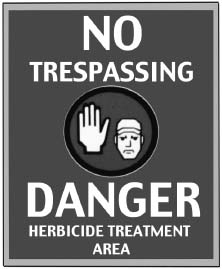|
Pesticides Are Designed To Kill
by Paul Donahue
Pesticides are designed for one purpose - to kill. They are
designed to kill insects (insecticides), to kill rodents (rodenticides),
to kill nemotodes (nematocides), to kill plants (herbicides),
and to kill fungus (fungicides). However, pesticides are also
hazardous to human health.
The World Health Organization conservatively estimates that
pesticides are responsible annually for 20,000 deaths worldwide.
They are carcinogenic (cause cancer), tetragenic (cause birth
defects), mutagenic (cause genetic defects), neurotoxic (damage
the nervous system), and immunotoxic (damage the immune system).
More than 50 pesticides in common usage are known to be estrogenic,
disrupting the hormone or endocrine system by mimicking the female
hormone estrogen, and causing problems ranging from decreased
sperm count to cancers of the reproductive organs. Pesticides
are found contaminating both surface waters and groundwater around
the country, and more than a hundred different pesticides, including
40 suspected carcinogens, have been found in the groundwater
of 45 states.

Pesticides are also hazardous to our agricultural systems,
creating resistant pest populations, contributing to declining
crop yields, undermining local and global food security and threatening
agricultural biodiversity. And they are hazardous to the environment
in general, threatening biodiversity in all its forms. Yet these
pervasive chemicals are aggressively promoted by multinational
corporations, government agencies, and other players in this
more than $35 billion a year industry. And while our use of these
dangerous chemicals is out of control and growing, our ignorance
of the dangers they present remains profound.
There are approximately 25,000 pesticides on the U.S. market
today, with about 600 in wide use. Pesticide use in the U.S.
alone amounts to 2.2 billion pounds a year, or roughly 8.8 pounds
per capita. Virtually all these pesticides in use have undergone
inadequate testing for safety. Most of what testing has been
done has concentrated on acute toxicity and carcinogenicity,
ignoring the possible endocrine-disrupting effects or damage
to our immune systems.
Many people believe that we have government agencies in place,
such as the U.S. Environmental Protection Agency and state pesticide
control boards, that safeguard us from dangerous pesticides,
but nothing could be farther from the truth. Even pesticides
which the EPA knows to be dangerous human carcinogens, (such
as the fungicide Captan, widely used on blueberries in Maine,
with about 18 million pounds applied annually in the United States),
have, because of industry pressure, proven impossible to remove
from the market. The pesticide industry is politically and economically
a very powerful one and is not hesitant to use its political
muscle and money to get its way, be it with regulatory agencies,
Congress, state legislatures, or in the courts. The legal bribery
of our campaign finance system makes it that much easier for
the pesticide corporations to prevail.
The tests that are conducted on pesticides are performed only
on the "active" ingredients of the products, the ingredients
designed to do the killing, not on the complete formulations.
The complete formulations of most pesticides typically contain
90 to 99 percent of so-called "inert" ingredients,
and any pesticide formulation may contain dozens of "inert"
substances. Contrary to their misleading name, many of these
"inert" ingredients are biologically and chemically
active and are as toxic or more toxic to humans than the active
ingredients of the pesticides.
Despite their potential danger to humans and the environment,
even the identity of all but a few of these "inert"
ingredients is kept from the public, protected as "trade
secrets" by the Environmental Protection Agency. Some 2300
chemicals have been approved by the EPA for use as "inerts"
including such dangerous substances as carbon tetrachloride,
methylene chloride (the active ingredient in many paint strippers),
pentachlorophenol, carbon disulfide, toluene, perchloroethylene,
n-hexane, xylene, and other petroleum distillates, cadmium and
lead compounds. However, to find out which of these 2300 "inert"
ingredients might be included in any given pesticide requires
the filing of a request under the Freedom of Information Act
(FOIA). This can take many months, and can still be denied by
the EPA. Some environmental groups have had to take the next
step of filing a lawsuit against the EPA to get this information,
taking many more months, and incurring great expense, with still
no guarantee of receiving a complete "inert" list for
a product. These FOIA requests are dealt with one pesticide at
a time and there are 25,000 pesticides out there to worry
about.
A loophole in our hazardous waste law also actually allows
the "recycling" of hazardous wastes as "inerts"
in pesticides. U.S. Environmental Protection Agency press officer
Al Hire was quoted as stating that allowing recycled hazardous
waste in pesticides as "inert" is "a way of disposing
of hazardous materials." Some of the hazardous wastes "disposed
of" in this way are chromium, mercury, thallium, zinc, naphthalene,
chlorinated phenols and dioxins. These linguistically detoxified
hazardous wastes then end up being sprayed onto our forests,
agricultural crops, gardens, and lawns.
 If we are not buying organic produce, do we know
what pesticides are on the foods we feed our children, and what
effect those pesticides will have on their growing bodies? Photo
by Paul Donahue.
If we are not buying organic produce, do we know
what pesticides are on the foods we feed our children, and what
effect those pesticides will have on their growing bodies? Photo
by Paul Donahue.
When the active ingredients of pesticides are tested, they
are tested one at time, not in combinations. We, on the other
hand, are exposed to pesticides in combinations. The EPA has
found traces of 20 pesticides just on apples, and on an average
trip to the supermarket we come back with traces of 60 to 80
pesticides on our food. Hormone system-disrupting pesticides
that by themselves have been linked to breast cancer and male
birth defects have been found to be up to 1,000 times more potent
when just two of them are combined. What happens when you combine
60 or 80 of these pesticides? Small, seemingly insignificant
quantities of individual chemicals can have a major cumulative
effect.
If all that isn't enough, it turns out that the majority of
pesticides are contaminated with dioxins, the extremely toxic
by-products of chlorine chemistry. The chlorine industry has
stated that 96 percent of all synthetic organic pesticides contain
chlorine or are manufactured using chlorine intermediates. As
a consequence, dioxins appear to occur as by-products in the
manufacture of virtually all synthetic pesticides.
Contrary to some popular misconceptions about the war on cancer
being won, cancer rates in the U.S. are steadily climbing. This
remains true even when the figures are age-adjusted and even
if lung cancer is ignored. Childhood cancer is increasing at
a rate of one percent each year. The incidence of some cancers,
particularly those of the reproductive system organs affected
by hormone-disrupting chemicals, has risen particularly steeply.
As an example, a woman today has a 1 in 8 chance of contracting
breast cancer, compared with a 1 in 20 chance fifty years ago.
Statistics like that should be taken as a loud alarm call. If
it is true that cancer death rates are falling, it is only because
we are getting so much practice in treating the disease. It is
time for our society to stop regarding these dangerous chemicals
as a normal part of modern life and to start treating them like
the indiscriminate killers that they are.
Recommended reading:
Living Downstream An Ecologist Looks at Cancer
and the Environment, Sandra Steingraber, 1997, Addison-Wesley
Publishing Co. Inc.
Our Stolen Future, Theo Colburn, Dianne Dumanoski,
and John Peterson Myers, 1996, Dutton
Toxic Deception How the Chemical Industry Manipulates
Science, Bends the Law and Endangers Your Health, Don
Fagin, Marianne Lavelle, and the Center for Public Integrity,
1999, Common Courage Press, Monroe, Maine
|



